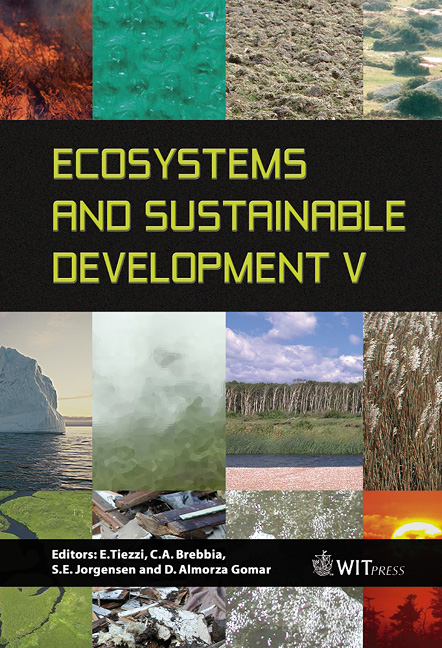Complex Systems And Slaughterhouse Waste Management
Price
Free (open access)
Transaction
Volume
81
Pages
9
Published
2005
Size
361 kb
Paper DOI
10.2495/ECO050731
Copyright
WIT Press
Author(s)
J.-H. Abraham
Abstract
Environmental problems, such as pollution provoked by slaughterhouse wastes, can be examined with an integral, multidimensional and systemic approach. The objective was to design a strategy to use such wastes as organic fertilizers; this as a solution to the pollution and social problems they provoke. The methodology applied was the one proposed by García (1986, 1994) for the study of complex systems. The starting point was the conceptual shift of pollutant materials from \“waste” to \“byproducts”. The research started with the construction of the system subject of study -the Slaughterhouse-Complex- considering certain key elements and the interactions between them; once the system was constructed, a diagnostic survey was conducted focusing on the identification of processes and mechanisms corresponding to the dynamics of the problem under study. Afterwards, an analysis of the dynamics of the system itself was performed, as well as of the changes that resulted from the processes of destructuration-restructuration arisen with the new stationary state reached by the system. Finally, it is suggested that with the proposed conceptual and structural changes, the new stationary state of the Slaughterhouse-Complex system will contribute to solve the environmental problems and to achieve a sustainable agricultural development Keywords: complex systems, system dynamics, slaughterhouse waste products. 1 Introduction The environmental problems in which humanity currently lives are extremely complex. This complexity is derived from the fact that there are really certain ecological, economic, political and social phenomena which are linked among themselves in a network of multiple interactions.
Keywords
complex systems, system dynamics, slaughterhouse waste products.





